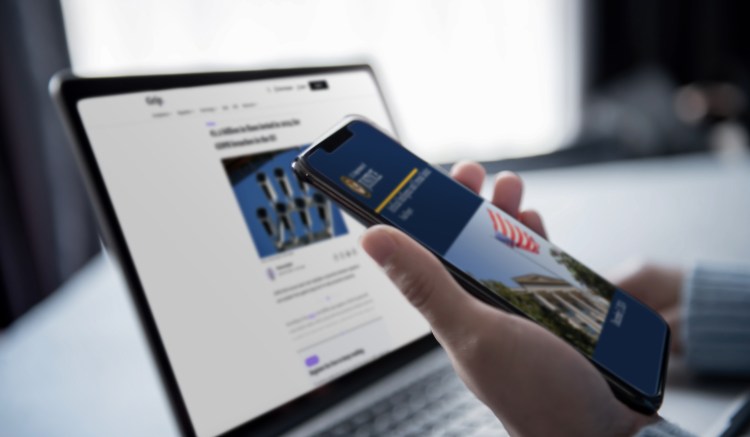
Five ways a single-vendor solution can mitigate data governance risks
Learn how a single-vendor solution can capture, store, and monitor business communications to enable complete compliance, all while protecting your data.
Written by a human
In brief:
- Fragmented data governance creates opportunities for legal, reputational, and fiscal damages from inefficiencies like increased operational costs and cybersecurity vulnerabilities
- A single-vendor solution can reduce those inefficiencies and ensure adherence to regulations like the DOJ’s ECCP, which mandates that companies fully capture and retain all business communications
- Single-vendor solutions also help avoid data loss, more common with multi-vendor solutions, wherein a percentage of data is dropped during transfer between software throughout the data journey
Why data governance matters:
Data governance refers to how an organization collects, manages, stores, and uses its data. Behind that simple explanation is a wide range of responsibilities that can incur significant risks to the company if mismanaged. In 2024, European regulators issued €1.2 billion (~$1.4b) worth of fines under the General Data Protection Regulation (GDPR), underscoring the financial cost of lax data governance.
Additionally, improper data governance can leave a company open to security breaches, data loss, delayed eDiscovery, and direct noncompliance. In this article, we look at how these data governance risks occur and the ways a single-vendor solution can help prevent them.
1. Mitigate the risk of data loss
A single-vendor solution means complete, secure connectivity between systems. Both multi-vendor solutions and vendors who outsource some of their operations to third parties create operational gaps that risk data loss. At any point where one software vendor must transfer data to another, there exists an opportunity for data to fall out of the system. Each extra handoff increases the chance for data loss.
A single-vendor solution removes handoffs, keeping data secure in one ecosystem. This also protects against cybercriminals looking to stage a breach through weak points in a company’s data governance structure. A single-vendor solution means there are no gaps for data to be intercepted in the overall data journey.
2. Ensure proper security measures
Compared to using multiple solutions, a single-vendor solution for data governance simplifies the verification method of vendor security in alignment with internal policies—a crucial step since data integrity isn’t just good form but a regulatory requirement. End-to-end platforms usually meet all industry and regional security standards. Thus, a single-vendor solution cut time spent on due diligence, oversight, and burdensome administrative and contractual tasks.
3. Achieve unified communications
Unified communications is the ability to view and manage all business communication channels—email, chat, voice, video, social media, and even AI-generated content—within one ecosystem. Fragmented systems force teams to toggle between platforms, creating blind spots that weaken compliance monitoring and slow workflows. As an example, a firm that relies on one vendor for a data archive for recordkeeping, and another for surveillance tools, may find disparity between the data that is retained and the data that is monitored. A single-vendor solution achieves unified communications by consolidating all channels into a central archive with consistent retention and monitoring. Compliance and surveillance teams then gain full visibility across communication channels to ensure they meet regulatory standards.
4. Improve data retrieval
Disparate data archives can slow retrieval, waste storage with duplicate entries, and cause informational errors. A patchwork of solutions means different storage, retention, and access controls across email messages, voice, and mobile data. Unified communications through a single-vendor solution allows teams to organize communications data into a coordinated format to improve eDiscovery and retrieval times for legal pulls and audits. To get retro, it’s like having an all-in-one printer versus using separate machines for printing, scanning, and faxing.
5. Scale with ease
A single-vendor solution makes it easy to expand and integrate operations as new data sources are added without significant developments to architecture. With all elements of a single-vendor compliance solution in sync, new channels become compliant quickly. This allows for rapid adoption of new technologies without over-complicating a company’s data governance structure.
For example, the DOJ recently singled out AI-generated communications as business data that needs to be captured and archived in its “Artificial Intelligence and Criminal Justice Final Report.” A comprehensive, single-vendor solution can quickly create tools to capture data from platforms like ChatGPT and store it in the archive alongside all other business communications, making it reviewable by current monitoring and surveillance tools. Companies can then securely capture ChatGPT data with the assurance that it integrates seamlessly into the full archive and compliance workflows.
Final thoughts
Organizations that utilize end-to-end, single-vendor solutions are better positioned to manage today’s regulatory complexity and adapt to tomorrow’s challenges. A unified approach reduces the risk of data loss, streamlines oversight for IT and legal teams, and creates lasting efficiencies through stronger information management.
Global Relay’s unified communications solution is one example of a single-vendor solution that combines comprehensive data capture with intelligent management tools to streamline operations while ensuring regulatory adherence. Request a demo to learn how Global Relay unified compliance solutions can simplify your operations while strengthening your data governance.


